Common Assumptions
Examining the Scientific Process
There are a number of common assumptions made by criminologists. These common assumptions are made to simplify the process of studying crime and criminals. While there is a place for these common assumptions, criminologists should remember that we are only “pretending” that these assumptions are true. The common assumptions are a close approximation to reality and do not “really” fit the facts. Some of the common assumptions are discussed below.
Common Assumptions
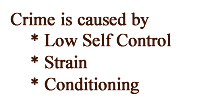
The Limited Causes Assumption
One of the common assumptions made by criminologists is that there are a limited number of causes of crime. As an extreme example, note that Gottfredson and Hirschi (1990) argue that differences in self control explain all crime at all times. In general, criminologists typically deal with a limited number of causes. While the limited causes assumption provides a practical approach to statistical analyses, empirical evidence from many tens of thousands of such analyses would suggest that this assumption cannot be defended.
There is a possibility that crime is a function of a limitless number of factors.
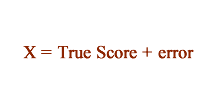
The True Score Assumption
Many statistical models assume that a measurement is composed of a “true score” and some type of “error” or unexplained variance. This model is only accurate if the phenomenon being measured are “stationary” which means “not changing.” This assumption would appear to be unsupportable. If there was a true score, the ability to predict criminal behavior would be higher.
Criminologists need to deal with a world where complex dynamics are the rule.

The Typology Assumption
Some theories begin with the assumption that there are distinct types of criminals. Moffitt’s (1993) life course taxonomy is a notable example. These theories posit that there are meaningful differences between groups of people. While this is an appealing simplification, it is an untenable position in a continuous world.
Criminologists need to deal with a continuous world where there are no clear lines of demarcation between one group and another.
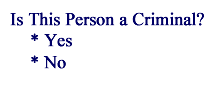
The Dichotomous Assumption
Many statistical analyses begin with the assumption that criminality can be represented as a dichotomous variable. With the dichotomous assumption, a person is either a criminal or they are not. While this black and white model is statistically convenient, it does not represent reality.
In reality, the world is not black and white. The world is more of a technicolor process.
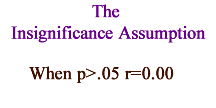
The Insignificance Assumption
One of the assumptions made by scientists is that insignificant factors do not matter. This is called the null hypothesis. It is conventionally assumed that when p>.05, there must be a null or “no” relationship between the variables. That is, the correlation between the variables is assumed to be zero. This would seem to be an erroneous assumption. Take a single case as a counter-example. The missing heritability paradox arises because most of the relationships between individual genes and criminal behavior are extremely small and insignificant. These insignificant relationships are not zero however, because the combinations of the individual genetic contributions add up to explain 50% of the variance at the genome level.
Criminologists need to deal with the possibility that the influences of massive numbers of insignificant factors combine to create substantial influences on the propensity for criminal behavior.
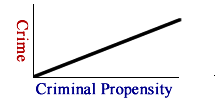
The Linearity Assumption
There is a perception that the relationship between the propensity for crime and the crime rate is linear. That is, a one unit change in criminal propensity should produce one unit of change in the crime rate. In a normal world, this is an erroneous assumption.
Criminologists need to deal with a world where nonlinearity is the rule.
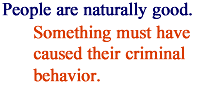
The Non-Criminal Default Assumption
There is a common assumption that people naturally avoid crime and that something “causes” people to be criminals. For example, strain theories posit that people are “pressured into crime.” This assumption ignores the many factors that lead to non-criminal behavior.
Criminologists need to deal with a world where both positive and negative factors affect the propensity for crime.
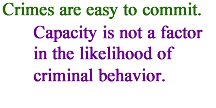
The Null Effects of Capacity Assumption
There is a common assumption that crimes are easy to commit and easy to avoid. Therefore, the capacity for crime and non-crime is not a factor that needs to be considered. This may be true in a general sense, but this assumption ignores the distinct possibility that the capacity for crime and non-crime is a significant factor affecting crime rates over the life course.
Criminologists need to deal with a world where the capacity for crime is something to be considered.
